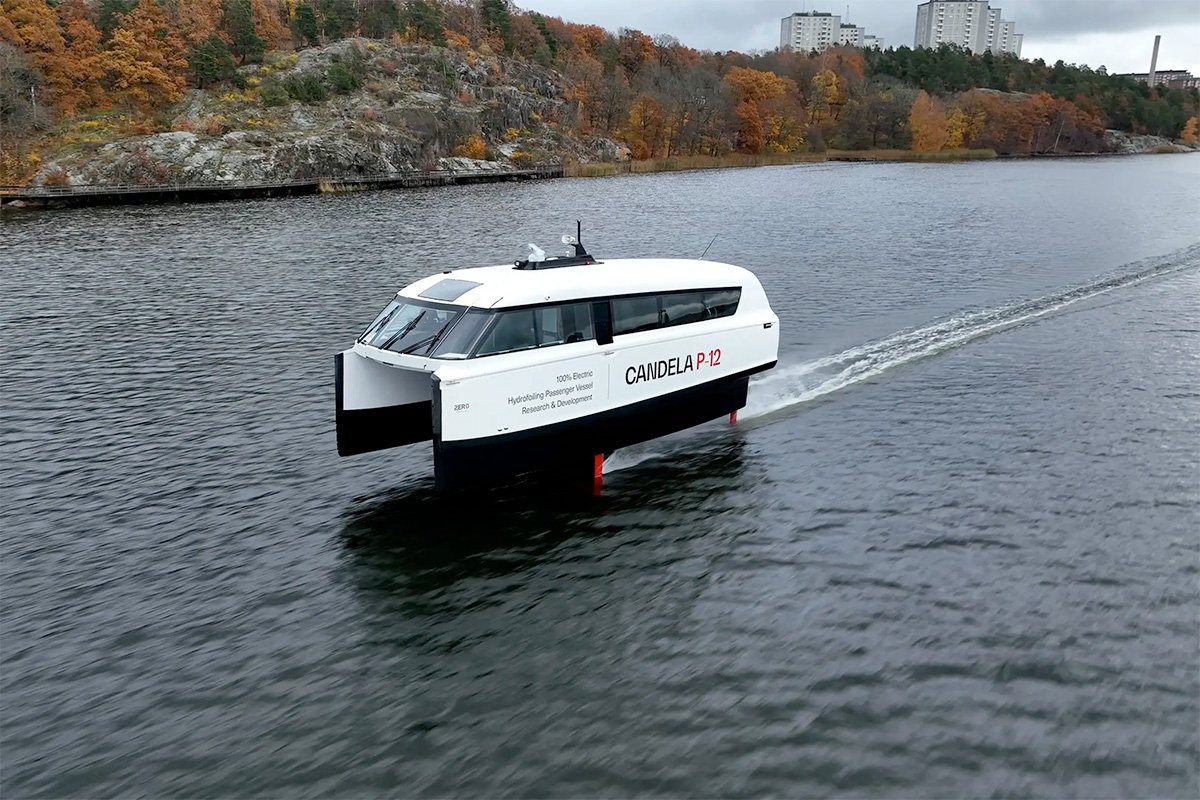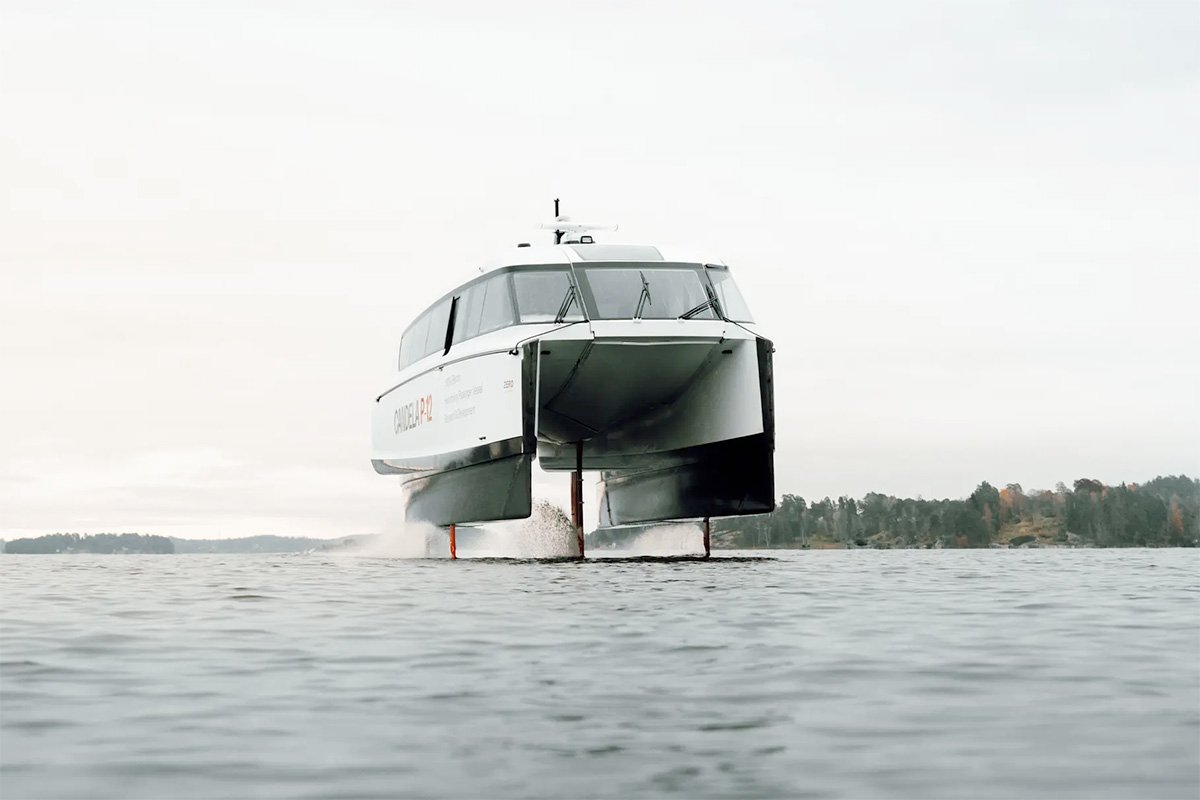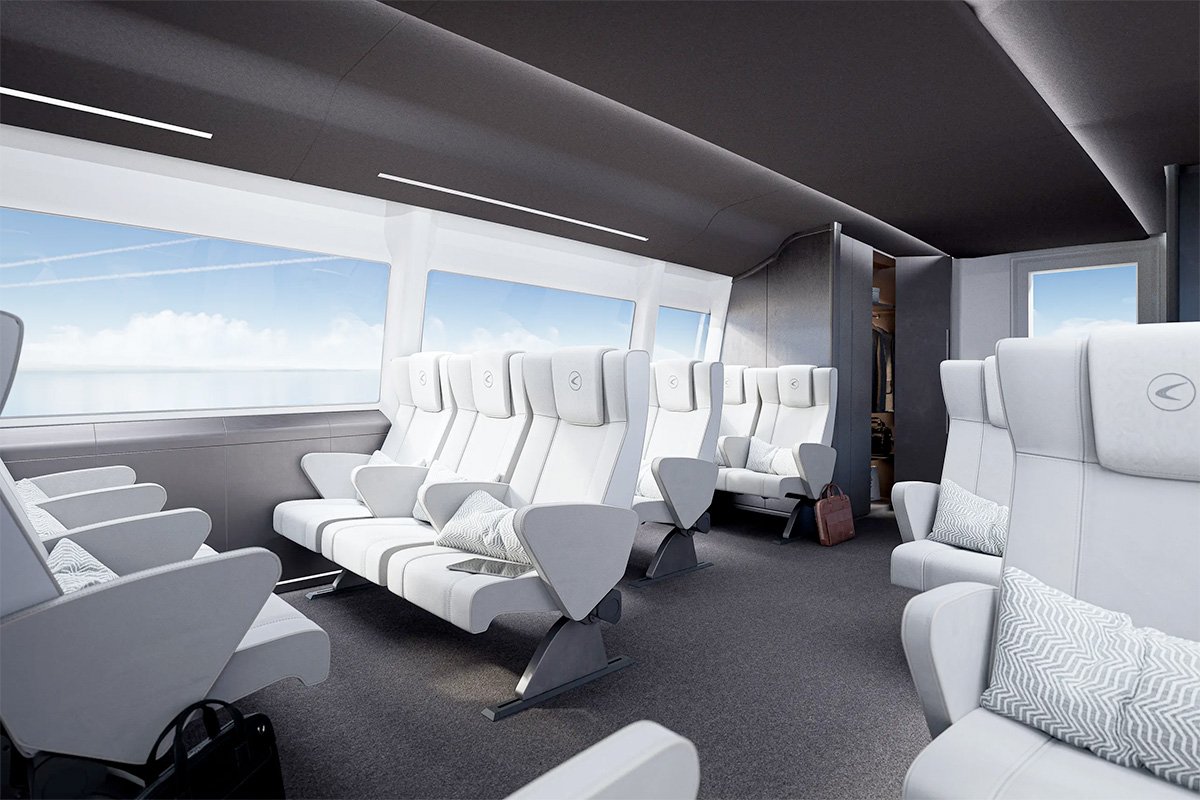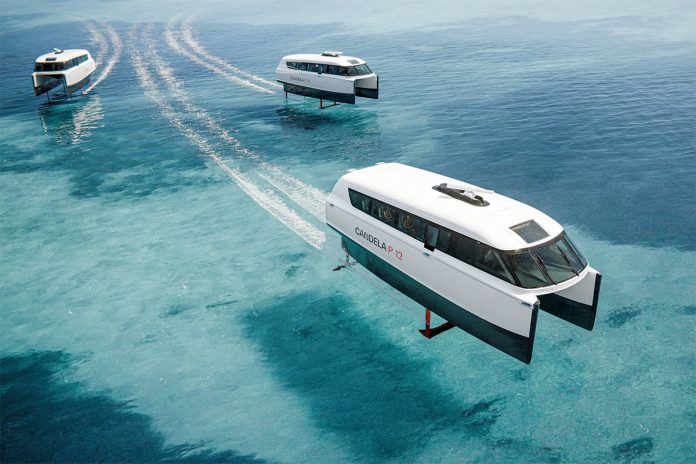The ambitious Neom project in Saudi Arabia, announced in 2017, is steadily taking shape with its vision to create a sustainable urban environment covering a vast area of 10,200 square miles (26,420 square kilometers) in Northwest Saudi Arabia. At the heart of this mega-project lies “The Line,” a proposed 105-mile-long, 660-foot-wide, and 1,600-foot-tall megacity designed to accommodate millions of residents and tourists by 2039. Amid the various futuristic transportation modes being integrated into Neom, the latest addition is a fleet of electric foiling water taxis.
Neom’s developers, led by Crown Prince Mohammed bin Salman Al Saud, envision a city where neighborhood amenities are within easy reach for pedestrians and cyclists, with electric shuttles and underground transit systems available for longer distances. For areas where water crossings are necessary, the project has opted for an innovative solution: the Candela P-12 electric hydrofoiling taxi.
The P-12, developed by Candela, is a zero-emission passenger vessel that rises above the water on computer-guided hydrofoils, reducing drag and enabling efficient travel across water bodies. Neom has placed an order for eight of these cutting-edge vessels, marking the largest purchase agreement for Candela to date. The fleet is expected to be delivered between 2025 and early 2026, offering an environmentally friendly alternative to traditional water commuting methods.
One of the key advantages of the Candela P-12 is its efficiency compared to conventional diesel-powered ferries. The vessel’s C-POD motors propel it at a service speed of 25 knots (approximately 28.77 mph), with a 252-kWh battery providing over two hours of operation per charge. This speed and range make the P-12 suitable for short commutes across water, aligning with Neom’s goal of creating a city where daily necessities and services are just a short boat ride away.

Practical insights from similar projects suggest that the P-12’s design offers a quieter and more sustainable mode of transport. The vessel is exceptionally quiet, generating only a negligible wake, which could be a significant benefit for preserving the serene environment that Neom aims to cultivate. Moreover, a life cycle analysis conducted by the KTH Royal Institute of Technology in 2022 found that the P-12 would emit 97.5% less CO2 over its lifetime compared to a conventional diesel vessel of the same size. This statistic underscores the environmental benefits of integrating such technology into Neom’s infrastructure.
The decision to incorporate the P-12 into Neom’s transportation network is a practical reflection of the project’s broader commitment to sustainability. It’s not just about building a futuristic city; it’s about ensuring that the city operates in harmony with the environment. I recall reading about similar initiatives in smaller coastal cities where electric ferries were introduced, and the results were overwhelmingly positive. Commuters appreciated the reduction in noise pollution and the absence of diesel fumes, which greatly improved their daily travel experience.

Neom’s adoption of the P-12 also signals a shift in how we might think about water-based transportation in urban settings. Traditional ferries are often large, slow, and energy-inefficient, making them less practical for frequent and short-distance commutes. The P-12, with its smaller size and faster operation, addresses these challenges by offering more frequent departures and quicker journeys.
As Neom continues to develop, the introduction of the Candela P-12 electric foiling water taxis is a promising step towards achieving the project’s ambitious goals. These vessels not only support the environmental objectives of the project but also enhance the overall experience for residents and tourists alike, offering a glimpse into the future of sustainable urban living.

Source: Candela



